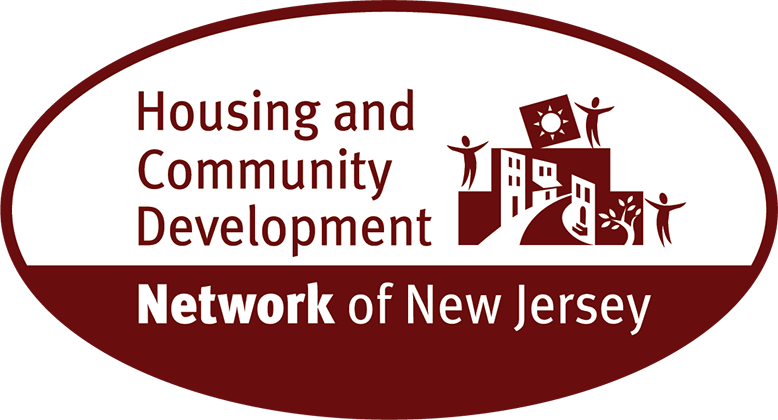| NJ's cities facing challenges, change |
 |
 |
 |
 Published: December 26, 2011 By Lucas K. Murray CAMDEN — Sixty years ago, Camden was as vibrant a manufacturing city as you could find on the East Coast. Rail cars glided through the city heading to a bustling waterfront with its ferries and the sprawling RCA plant. Navy ships were built here. Camden was home to a chocolate factory and not one, but two, pen manufacturers. They’re all gone. Gone too are the thousands of workers who flocked to factories day in and day out, and their families who supported local businesses and filled schools. The same can be said for most of New Jersey’s once-great urban centers. Opportunities that once existed will likely never come back. The challenge is for cities to capitalize on the fact they’re virtually blank slates, allowing for towns to redefine themselves. On Broadway in downtown Camden, the Cooper Medical School of Rowan University is rapidly being constructed less than a block away from a neighborhood hit by recent violence. A positive future with endless possibilities for students and Camden itself, not the city’s brutal past and present, is what the new school’s dean has his eyes set on. “We’re looking around the neighborhood to partner with the city and interested individuals to rebuild,” Dr. Paul Katz said. “We’ve talked about potent opportunities from student housing to retail to not only attract students but have value to people who live in Camden.” Construction of the $139 million, 200,000-square-foot medical building is the latest addition to what Mayor Dana Redd consistently touts as the city’s economic future. The school is in addition to Cooper Hospital, Rutgers University-Camden, Coriell Institute for Medical Research, Camden County College and another Rowan University satellite campus. They’re the “eds and meds” Redd speaks of at virtually every meeting regarding Camden’s comeback. “If you look at cities challenged by urban problems, most of them have some of the best medical schools,” Katz said. “ The impact the medical school will have in the city and in the region is that both will grow over time.” Granted, it will be decades before the full realization of improved services and housing for current and future residents can come to pass. “We’re optimistic we can get the city back on its feet,” Katz said. So far, 2,800 applicants are competing for just 50 slots in the new school’s first graduating class. Katz said 70 percent of the applicants will be from New Jersey, many from groups traditionally underrepresented in medicine and economically disadvantaged backgrounds. Attracting students to live in the city is part of the school’s mission. Dozens of revamped homes can be found between Cooper Hospital and its new medical school. Only this year did Camden join the state’s Live Where You Work program, which furnishes first-time home buyers with low-interest, fixed-rate mortgage loans as long as they work in town. Only a handful of “big” institutions remain in Camden. For the most part, those who work here leave once the work day ends . Only three blocks down Broadway, the Carnegie Library was once home to giants of science, literature and philosophy. The 106-year-old building has been abandoned for the past 25 years. In that time, vandals have stripped the grand copper ceiling that once protected literature from the elements. Now, where knowledge and young minds grew, a tree does, reaching through the collapsed roof . Sealing the structure is the first step in developing the property for either public or private use. A new roof, replacement windows and a complete overhaul of the interior could mean a restaurant, market or a community center. An early incarnation of the Cooper’s Ferry Partnership, an organization that works to establish private and public partnerships in the city, helped revitalize Johnson Park and the former Cooper Library to usable public space. The hope is the Carnegie Library gets the same chance the Cooper Library did. Cooper’s Ferry CEO Anthony Perno said development in the city is a matter of placing strong projects with growth potential throughout town and then connecting them with smaller accompanying positive development. “It’s not just this building,” Perno said. “It’s this building in the framework of everything that’s happening here that starts to add together to create an opportunity to really change things.” Change, though, often begins at home. Getting individuals in one is the mission of Heart of Camden — a group that focuses its collective attention to revitalizing the city’s Waterfront South community. “You really have to work at it,” explained Heart of Camden Executive Director Helene Pierson. “By chipping away and chipping away it’s becoming better and better and the people feel it. The people who have lived there all these years will tell you that.” Her group started off rehabilitating homes and providing ownership opportunities for low- to moderate-income families in the once-thriving industrial area. Over time, the group realized housing was only one part of the equation, and that in order for the neighborhood to be sustainable, it needed to branch out. The rehabilitation of the Star Theatre, an old silent-movie house on Broadway, into a full-size gymnasium is set to be completed in the coming year. Small pocket parks have emerged, streetscape projects were completed and much of the prostitution and drug activity that had become prevalent here went away. That’s on top of more than 220 homes that have been rehabilitated in the past 27 years. The aim is for ownership over rental, as people who come and go don’t have a chance to put down roots to help make the area a community. Waterfront South is the only area of Camden that has seen an uptick in residents’ income levels. Pierson claims success here has come from following the best planning practices. Haphazard development across town and a leadership that simply doesn’t understand urban planning over the years have contributed to the city’s current situation, he said. “It has always been the case in Camden where those in power will say we’ll work in these key areas in the downtown,” Pierson said. “It has always been the neighborhoods suffering at the expense of the other, when you really need to work on both.” In the past two decades, an aquarium, minor-league baseball stadium, concert venue and the Battleship New Jersey have become mainstays on the waterfront. Residents have long been critical of the fact that prosperity and renewal have been limited to the area along the river, mainly for the benefit of outsiders and corporations. “You have to ask the tough question of were these projects meant to secure significant employment or were they meant to make Camden a place of destination,” said Roland Anglin, executive director of the Initiative for Regional and Community Transformation at Rutgers University’s Edward J. Bloustein School of Planning and Public Policy. The projects, he said, are a start, but an emphasis on building people themselves is in order. “It’s not an ‘either or,’ it has to be ‘both and,’” Anglin said, when it comes to small and large development. “If you don’t have those large-scale projects that produce significant job flow, then neighborhoods aren’t going to be healthy.” In Newark Meanwhile, in Newark there are about 25 active development projects throughout its downtown and neighborhoods. While Anglin said the city will never have the profile of a New York City or Chicago, he noted Newark is on the way up. “This is a city that has come back from the precipice,” he said. At this point, Anglin sees Newark as continuing its upward trend. Major projects like the Prudential Center, the New Jersey Performing Arts Center, accompanying development downtown and concentrated efforts to provide housing options for large African, Haitian and Latino immigrant populations all have contributed to the rise. A strong economy in nearby New York City is arguably a benefit for Newark, while Camden’s proximity to Philadelphia and its on-the-ropes economy is a hindrance. Investment of $700 million in projects that are under way or recently were completed in Newark have meant more bricks being stacked for “Brick City.” Deputy Mayor of Economic and Housing Development Adam Zipkin said 2,500 construction jobs have resulted from efforts citywide. “I think we’re going to see that trend continue,” Zipkin said. “Our downtown will continue to become a vibrant 24/7 downtown. We’ll continue to build our port.” It’s expected that current development efforts will result in 2,500 permanent jobs. On a lot next to the arena, Marriott plans to build Newark’s first new downtown hotel in almost 40 years. An Indigo Hotel is expected to open in a renovated space nearby. Wakefern, owner of an 180,000-square-foot, temperature-controlled food distribution center, is set to open in the East Ward in 2012, bringing 100 jobs. Damascus Bakery plans to move from Brooklyn to the South Ward next year as well to expand and create as many as 200 new full-time jobs. The city has “first source” agreements in place with new companies in which commitments to permanent jobs are made and those companies will then notify the city so that the greatest number of locals may find work there. “We’re trying to connect residents to opportunities and jobs that are coming here,” Zipkin said. “In the neighborhoods, we have affordable mixed income housing happening around the city.” |













